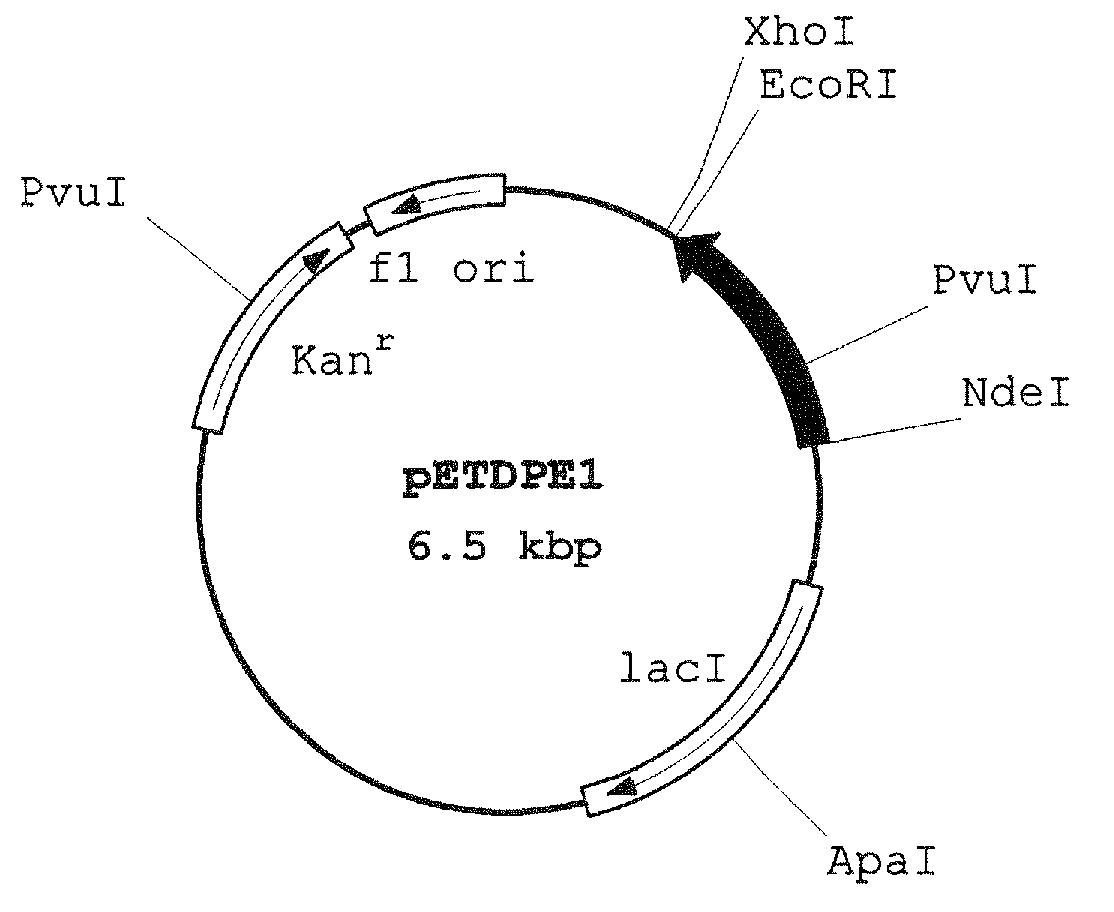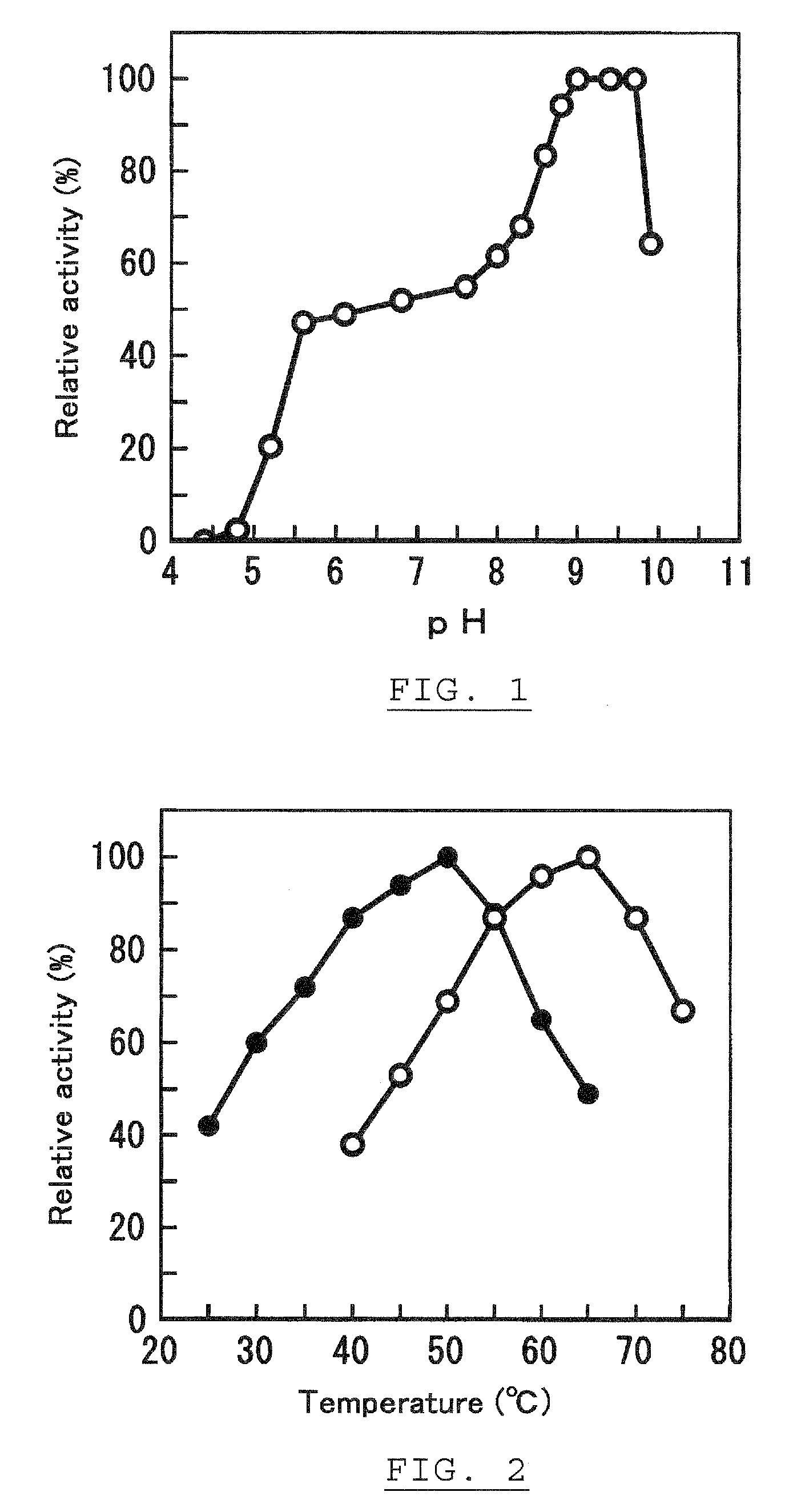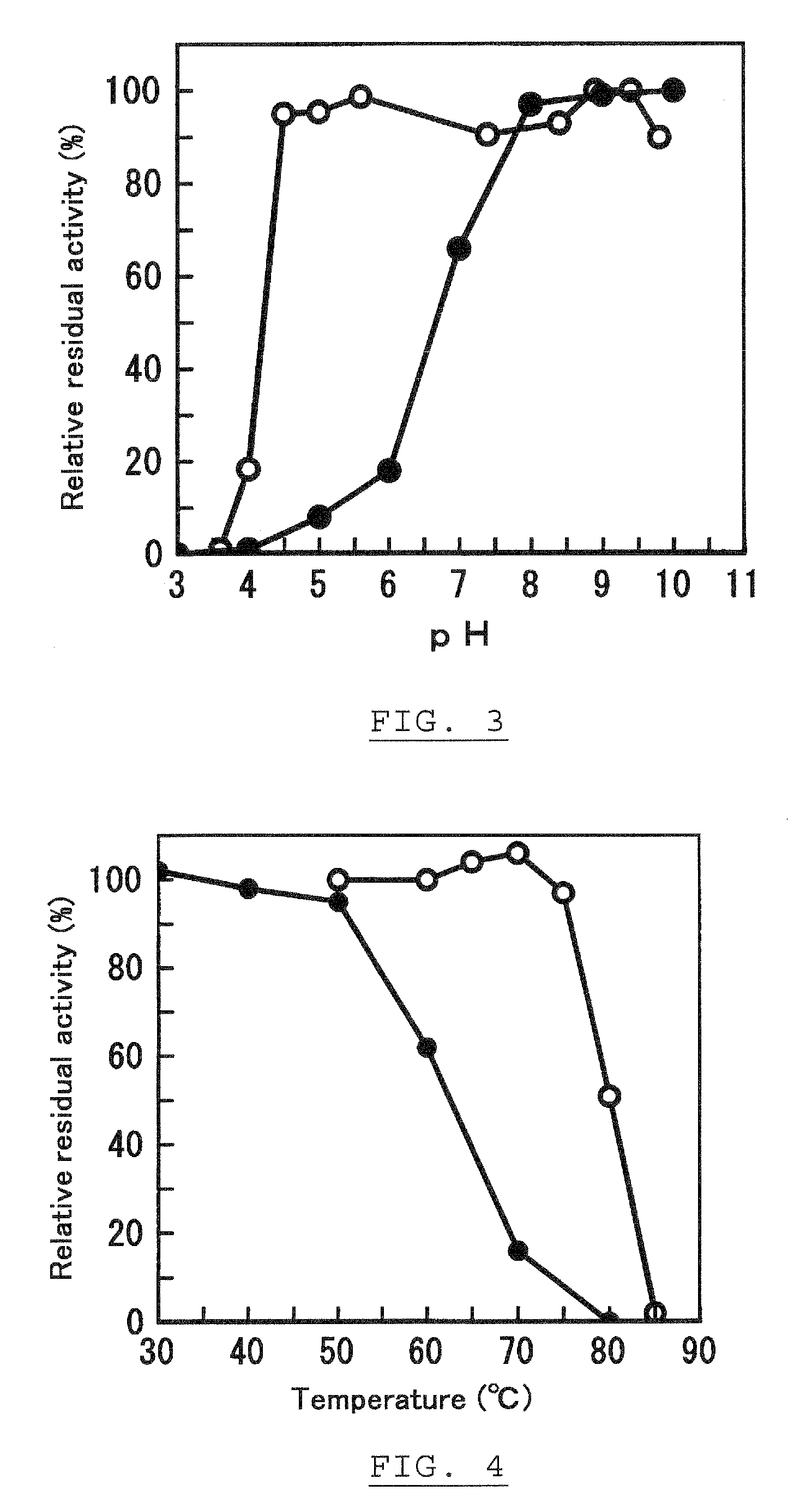Ketose 3-epimerase, its preparation and uses
a technology of ketose and ketone, applied in the field of ketose 3epimerase, can solve the problem of very low production rate of d-ketohexose 3-epimerase, and achieve the effect of inhibiting the determination of d-fructos
- Summary
- Abstract
- Description
- Claims
- Application Information
AI Technical Summary
Benefits of technology
Problems solved by technology
Method used
Image
Examples
experiment 1
Cultivation of Rhizobium leguminosarum ATCC14480
[0062]A liquid culture medium consisting of 1.5% (w / v) of “PINE-DEX #4”, a partial starch hydrolyzate commercialized by Matsutani Chemical Industries Co., Ltd., Hyogo, Japan, 0.1% (w / v) of “SUNMALT S”, a maltose product commercialized by Hayashibara Shoji, Inc., Okayama, Japan, 0.1% (w / v) of “YEAST EXTRACT S”, a yeast extract commercialized by Nihon Pharmaceutical Co., Ltd., Tokyo, Japan, 0.5% (w / v) of “POLYPEPTONE S”, a yeast extract commercialized by Nihon Pharmaceutical Co., Ltd., Tokyo, Japan, 0.1% (w / v) of dipotassium phosphate, 0.06% (w / v) of sodium di-hydrogen phosphate, 0.05% (w / v) of magnesium sulfate, 0.001% (w / v) of ferrous sulfate, 0.001% of manganese sulfate, and water was placed in a 30 L-jar fermenter in an amount of 20 L, sterilized by autoclaving at 120° C. for 20 min. Successively, the culture medium was inoculated with 1% of seed culture of Rhizobium leguminosarum ATCC14480, and followed the cultivation under aeratio...
experiment 2
Purification of Ketose 3-epimerase
[0063]About 10 L of the culture broth obtained in Experiment 1 was centrifuged to collect cells. The resulting cells were suspended in 1 L of 20 mM Tris-HCl buffer (pH 8.0) and disrupted using “DYNO®-MILL”, a beads mill commercialized by W. A. Bechofen GmBH, Germany. The resulting disrupted cell-suspension was centrifuged and the supernatant was collected as a cell-free extract. After dialyzing the cell-free extract against 20 mM Tris-HCl buffer (pH 8.0), the resulting crude enzyme solution was subjected to anion-exchange column chromatography using 800 ml of “SEPABEADS FP DA-13” gel, an anion-exchange gel commercialized by Mitsubishi Chemical Corporation, Tokyo, Japan, and the absorbed ketose 3-epimerase was eluted with a linear gradient increasing from 0 M to 0.6 M of sodium chloride. The active fractions were collected and added ammonium sulfate to give a final concentration of 1 M, and then subjected to hydrophobic column chromatography using 10...
experiment 3
Properties of Ketose 3-epimerase
Experiment 3-1
Molecular Weight
[0065]The purified enzyme preparation of ketose 3-epimerase, obtained by the method in Experiment 2, was subjected to SDS-PAGE using a 5-20% (w / v) gradient gel and the molecular weight of the was measured comparing with molecular weight markers, commercialized by Bio-Rad Japan, Tokyo, Japan. It was revealed that the ketose 3-epimerase has a molecular weight of 30,000±3,000 daltons.
PUM
| Property | Measurement | Unit |
|---|---|---|
| Temperature | aaaaa | aaaaa |
| Temperature | aaaaa | aaaaa |
| Molar density | aaaaa | aaaaa |
Abstract
Description
Claims
Application Information
 Login to View More
Login to View More - R&D
- Intellectual Property
- Life Sciences
- Materials
- Tech Scout
- Unparalleled Data Quality
- Higher Quality Content
- 60% Fewer Hallucinations
Browse by: Latest US Patents, China's latest patents, Technical Efficacy Thesaurus, Application Domain, Technology Topic, Popular Technical Reports.
© 2025 PatSnap. All rights reserved.Legal|Privacy policy|Modern Slavery Act Transparency Statement|Sitemap|About US| Contact US: help@patsnap.com



